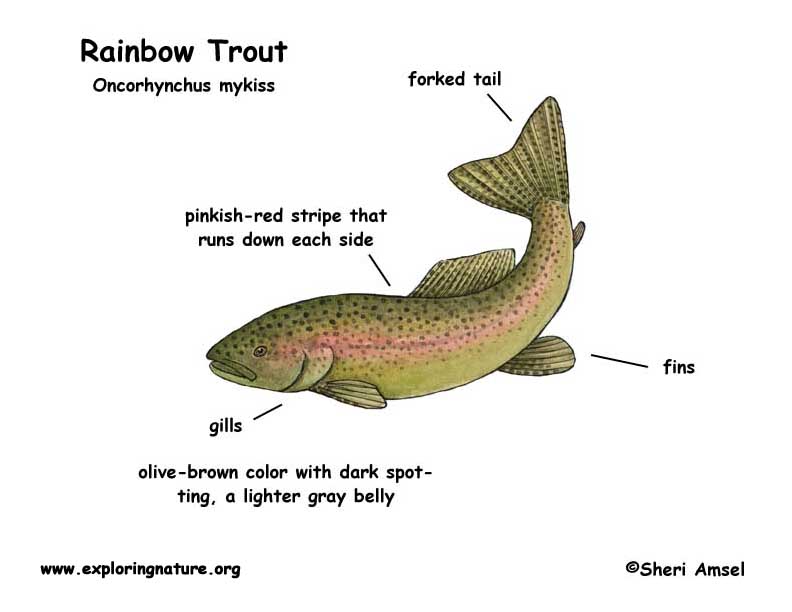

They are found in the Pacific Ocean in Asia and North America. In freshwater they are found throughout the norther parts of the U. S and Canada.
They like cooler waters.
They are an olive-brown color with dark spotting, a lighter gray belly and a forked tail. There is a pinkish-red stripe that runs down each side. Rainbow trout that live in the sea get much larger and can reach more than 40 pounds, while freshwater rainbows rarely reach more than 30 pounds and usually are less than 10 pounds.
Many rainbow trout migrate up from the sea to spawn (anadromous).
They eat insects, crustaceans, mollusks and other fish.
The female makes a shallow nest in the stream bed gravel and lay eggs. They hatch in 3 weeks.
Kingdom: Animalia
Phylum: Chordata
Subphylum: Vertebrata
Class: Actinopterygii
Order: Salmoniformes
Family: Salmonidae
Genus: Oncorhynchus
Species: O. mykiss
When you research information you must cite the reference. Citing for websites is different from citing from books, magazines and periodicals. The style of citing shown here is from the MLA Style Citations (Modern Language Association).
When citing a WEBSITE the general format is as follows.
Author Last Name, First Name(s). "Title: Subtitle of Part of Web Page, if appropriate." Title: Subtitle: Section of Page if appropriate. Sponsoring/Publishing Agency, If Given. Additional significant descriptive information. Date of Electronic Publication or other Date, such as Last Updated. Day Month Year of access < URL >.
Amsel, Sheri. "Trout (Rainbow)" Exploring Nature Educational Resource ©2005-2024. December 13, 2024
< http://www.exploringnature.org/db/view/594 >

